Factors associated with suicide occur at multiple levels, including the individual and interpersonal (relationships) levels. Individual level factors include mental health and substance use issues, as well as physical health problems. Relationship level factors include issues such as a problem with family, an intimate partner, or a friend.
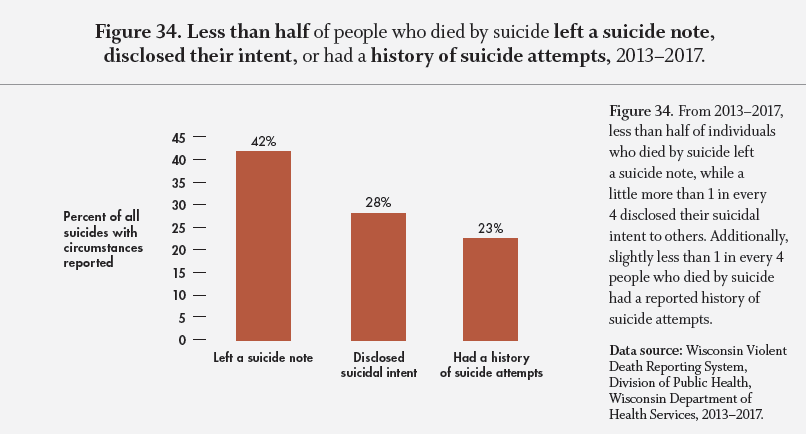
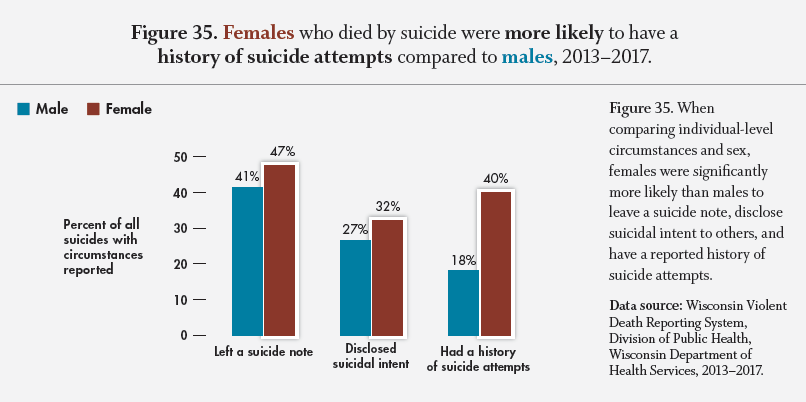
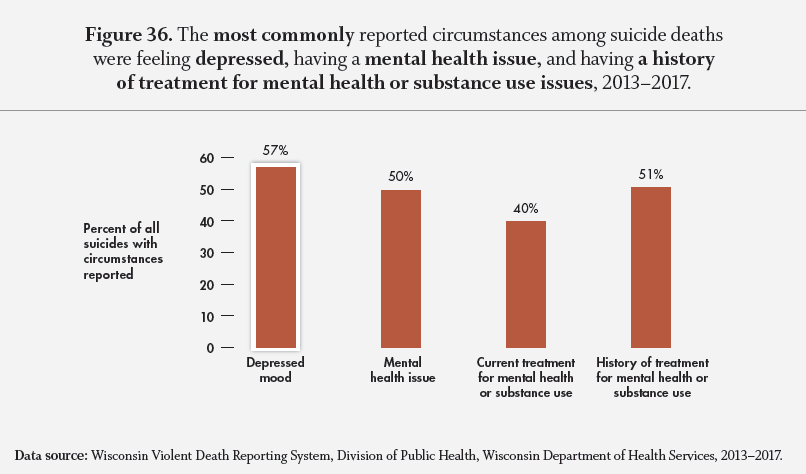
Figure 36. Of Wisconsin residents who died by suicide between 2013 and 2017, more than half of suicide deaths were preceded by a reported depressed mood. This does not necessarily mean that the individual had a clinical diagnosis or that the depressed mood directly contributed to the death. In addition, half of suicides had a reported mental health issue. This means that the individual was receiving current treatment (i.e., the individual had a current prescription for a psychiatric medication, saw a mental health professional within the past two months, or participated in treatment for substance use) at the time of the suicide. Over half of people who died by suicide had a history of treatment for mental health or substance use issues, and 40% were currently in treatment for mental health or substance use issues.
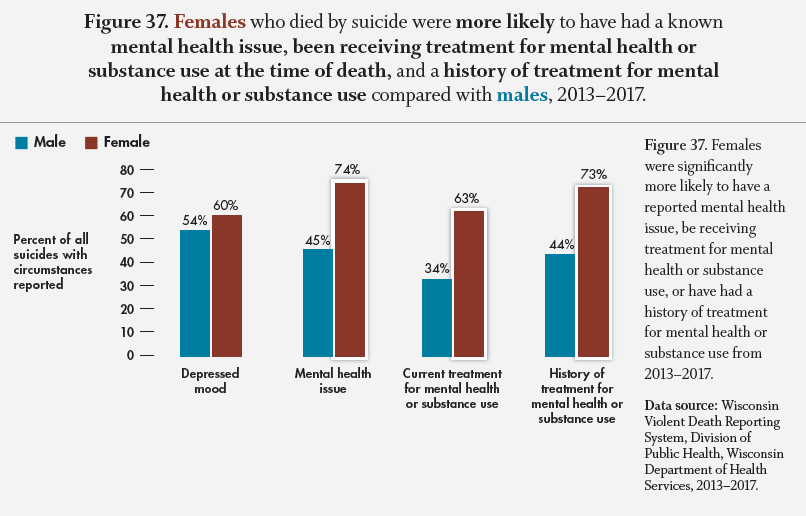
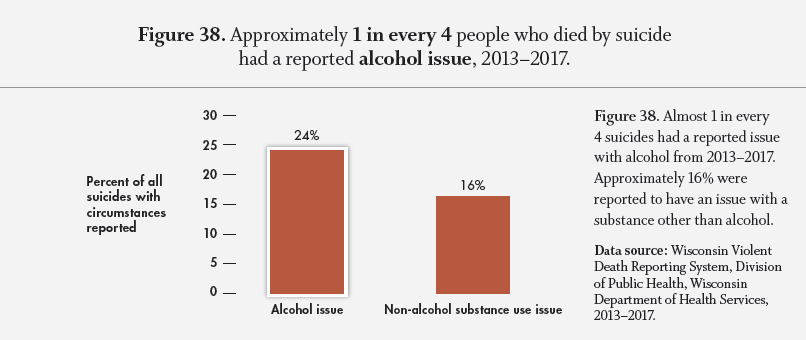
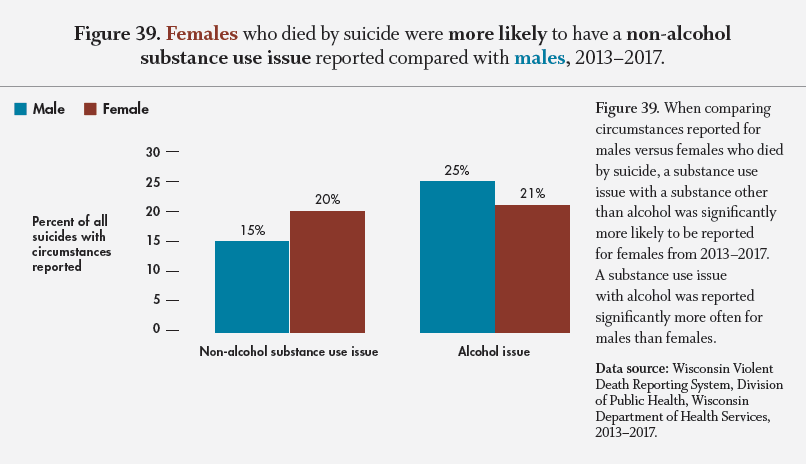
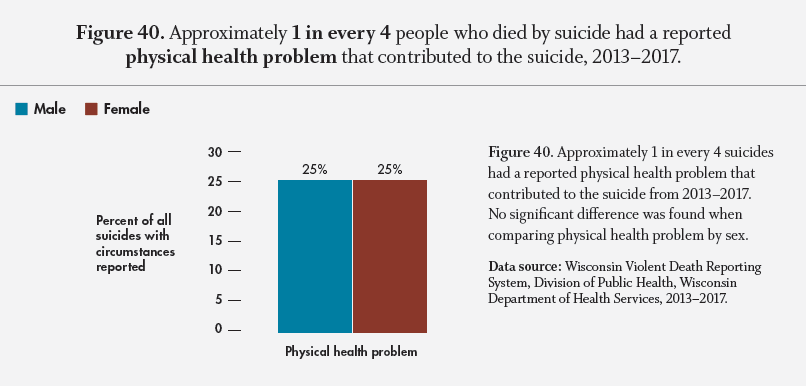
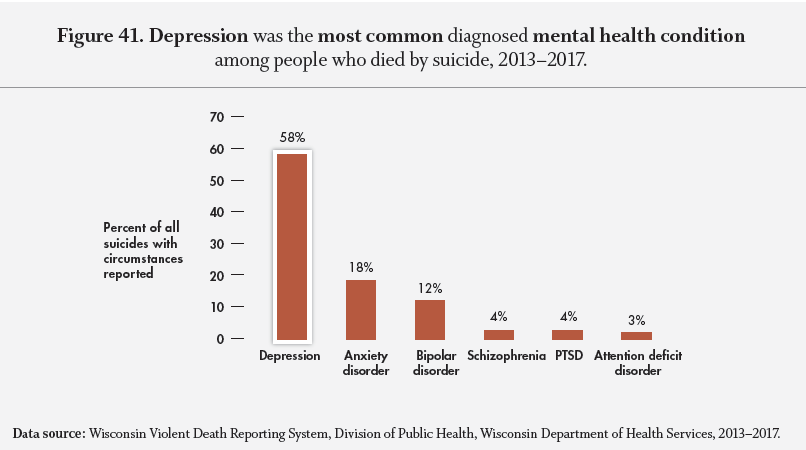
Figure 41. From 2013–2017, data shows that over half of people who died by suicide were diagnosed with depression, while the remaining five mental health conditions were reported at smaller proportions.
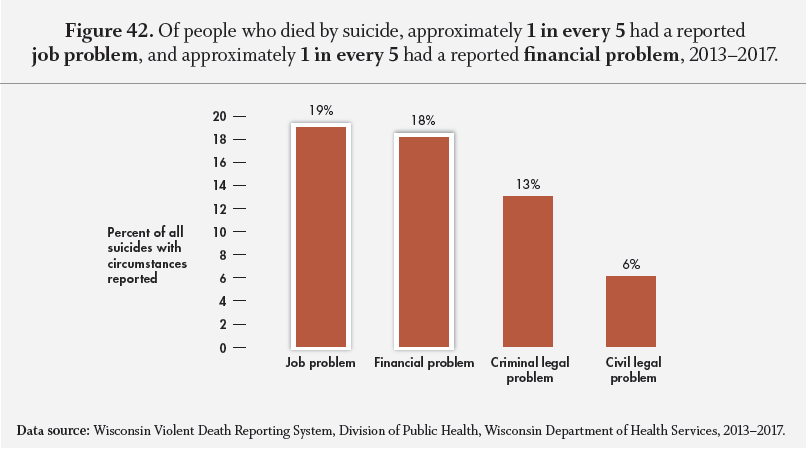
Figure 42. From 2013–2017, 1 in every 5 individuals reported a job or financial problem. Also, criminal legal problems were determined to be related to the suicide among 13% of people who died by suicide.
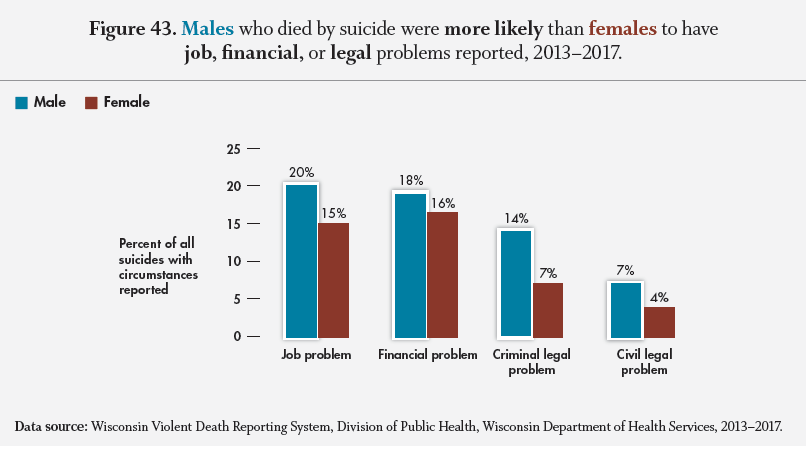
Figure 43. Financial and legal circumstances that may have contributed to the suicide death also vary by sex. Males were significantly more likely to have a reported job, financial, criminal legal, or civil legal problem when compared to females.